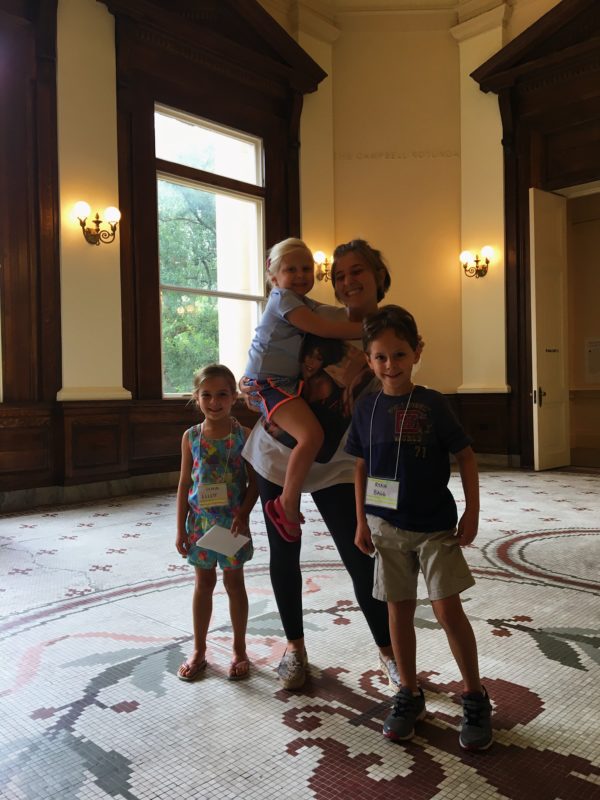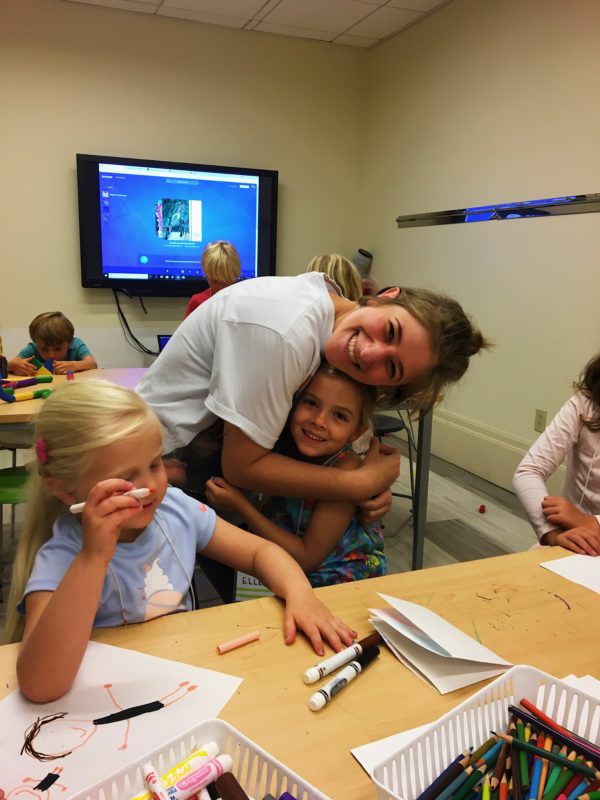From the moment I was leading a group of children in counting the buttons on the eighteenth-century formal jacket of Colonel Barnard Elliot, Jr., I knew that the Gibbes Museum of Art was a place that I could belong. As a rising Fashion Textiles, Merchandising, and Design senior at the University of Rhode Island, I searched for an internship in an environment of encouragement and growth. Truthfully, I searched only for opportunities in art museums. My ultimate career goal is historic costume curation, a unique yet agreeable mix of art history and fashion. The Gibbes was a perfect fit, and I was beyond thrilled when I was offered this experience.
Museums are a place in which I can freely explore my great loves. I find myself completely surrounded by inspiring historical figures, and become engrossed in my ideal combination of art and fashion. Museums are institutions in which I feel most at home with my choices and education. They are an all-encompassing space in which I wish to spend the rest of my life. The children I worked with this summer, typically aged between four and twelve years old, arrived each morning at 9:00 am, full of energy and enthusiasm. I expected them to more likely channel that energy by throwing rocks in the small fountain than by being enamored with the Roy Lichtenstein print on the third floor. Needless to say, when the campers shared my excitement in viewing the works of art throughout the galleries, I was pleasantly surprised.
Each week of camp, a docent led a class of children on a guided tour of the upstairs galleries to focus on a few works that related to that week’s theme. And every week, I was stunned by the questions that the campers posed. During one session themed Do the Charleston!, we focused on art of the Lowcountry, and one of the campers asked me if the old Charleston deli portrayed in Robert Merrill Sweeny’s Levi’s Deli, 106 Spring Street, Charleston was haunted. During another week, entitled Passport to the Past, when studying the 1858 A View of the Roman Forum, a brave girl raised her hand and so honestly asked, “Who are the Romans?”

For the past eight weeks, I have worked alongside these Charleston students, helping with art projects, leading discussions, and using a lot of glue. I’ve seen elaborate lions blended with oil pastels, Giverny ponds in watercolor, and self-portraits done in magazine collages. As one of the few adults in the classroom, I was a role model for these little learners. I would sit at each table and, by making a few marks with a pencil, inspire the entire class to change their work. An incredibly humbling experience, I often found myself asking more questions than the campers themselves. Each and every project came with new skills to be learned, both for me and the children.
Most importantly, I loved communicating with these children. I wanted to know everyone’s favorite color, favorite animal, favorite thing to draw! I was genuinely fascinated with every scribble that they did during free draw time, from how they drew their giraffe’s neck to imaginative creations and designs that they completely invented.

Exploring these topics through their eyes enriched me. Formal training can only go so far when a four-year-old inquires, “Do you think Monet would have liked my water lilies?” I learned side-by-side with these children, not only about patience and quick adaptations but also about how to draw inspiration from any and everything.
What was even more compelling about this internship for me was the breadth of opportunities that I had. Personally, my favorite week was the one that centered around textiles. During this week of camp, I worked with a group of teen campers, instead of the normal four through twelve age groups. As teenagers, the campers were capable of projects with a larger artistic scope and were eager to grasp the subjects being presented. We focused on Shibori, a fabric-dyeing technique common in Japanese culture. Using natural indigo dye native to the Lowcountry, the class created naturalistic designs by pressing and gathering the fabric. They also experimented with using resist-dyeing using flour from a cassava plant, which, when blended with boiling water, creates a paste. That paste can then be painted on cotton and dyed in indigo. Because cassava is water soluble and indigo is not, the paste will wash off when wetted and leave the design painted.Besides the actual classroom time, I was also able to work with the education department itself. With this, I was able to explore more deeply the inner workings of the Gibbes, and museum professions in general. Before beginning my summer in Charleston, I believed that I knew exactly what I wanted to do. Upon my exit, I am (happily) more confused than ever! I enjoyed hearing and learning about everyone’s position, with every exciting day bringing a new, “I want to do that!” thought in my head.
Overall this experience has been nothing but enriching. I have grown exponentially as a student and art historian, as a teacher, communicator, and problem solver. I want to thank everyone at the Gibbes for giving me the chance to be there and be part of such an incredible community. And, who knows, maybe I’ll become a museum educator!
— Sydney Hazen, Gibbes Education Intern & guest blogger
Published August 3, 2018
Top Image: As a fashion Textiles Merchandising, and Design student at the University of Rhode Island, intern Sydney Hazen found herself right at home in the teen textile summer camp.

